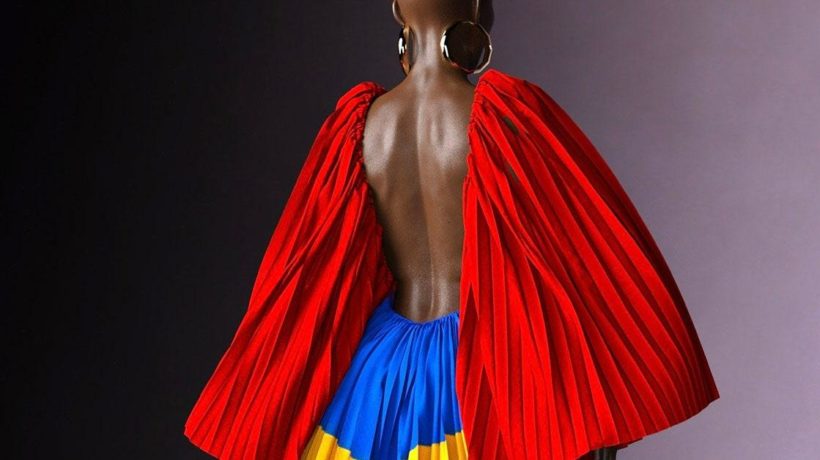The fashion industry thrives on physical touch and tangibility – the ability to touch, feel and try on the clothing. Seeing what it looks like in motion and on different body types is a vital component to the shopping experience and way in which the garment is showcased.
Of course, social distancing has put a stop to all of this, and forced designers, brands, retailers and marketers to engage their consumers through purely digital means.
Moreover, the ban on mass gatherings has thrown the fashion calendar into disarray, with some shows, such as New York Fashion Week, which was scheduled for this June, postponed indefinitely, while others are cancelled completely. Then there are those brands that are embracing a new age – and finding creative ways to keep fashion alive in a new-found virtual sphere.
For the Menswear and Couture Fashion Weeks this past June and July, high-end labels including Chanel, Valentino, Dolce & Gabbana and Dior entered the digital arena with creative virtual shows and short films to present their latest collections.
Other labels took it a step further by utilising various technological advances such as virtual reality and artificial intelligence. One such brand is Hanifa. The US-based, Congolese-inspired label creates ready-to-wear looks in bold designs and vibrant colours. Designer Anifa Mvuemba was looking forward to showcasing her latest collection as New York Fashion Week but instead conceptualised an innovative virtual show on Instagram Live when this opportunity fell through.
The high-tech show displayed the garments in 3D, moving against a black backdrop – as if worn by invisible models who were strutting across the runway. With the clothes hugging every curve of the “model”, and without the distraction of human bodies and a large runway production, it was easier to absorb every detail of the garments. The show created a buzz on social media – and with good reason. It was the first of its kind, and the first time virtual reality has been used in fashion in such an impactful way.
However, Anifa has always had a fascination with realistic 3D animation and during the pandemic, had more time to experiment with technology herself. She hired a developer who works with CAD and animation software, and together they brought her vision of a 3D fashion show to life.
But the process was not that simple. Each garment designed for her Pink Label Congo collection had to be transformed to fit onto the body of an avatar. As it turns out, you have to be just as precise about the fit of the garments when an avatar is wearing them as you would be with a real model. According to Mvuemba, if the garment isn’t perfectly tailored, it will slide off in motion. “It was incredibly painstaking,” she says.
The painstaking work made for a show that was not only memorable but boundary breaking. Over the last eight years, Mvuemba has built a direct-to-consumer brand entirely through social media – and with more creative digital projects in the pipeline, Hanifa is leading the way in embracing a new age of virtual fashion.
When it comes to the retail side of the industry, the methods for turning social media buzz into actual sales and profit is also undergoing a transformation. Online stores are becoming more immersive, blurring the lines between e-commerce and a brick-and-mortar shopping experience. While Covid-19 social distancing was not the catalyst for this change, it certainly is accelerating the movement.
A case in point is Kanye West’s new Yeezy online store. Said to re-emerge later this year, the new website, which sells the rapper’s line clothing, footwear and apparel products, seeks to make the internet “a more humane place,” says Nick Knight, West’s creative partner for the site.
Instead of using flat photographs of models, Yeezy Supply will have 3D images of models that look like video game avatars. There will be a selection of models of different body types.
Customers will be able to choose an outfit or garment, then put it on the model who will walk across the screen. If you want to know more about that model, you can click to get a few background details, like her favorite food, or a significant life experience she has had.
West attributed the models with compelling life stories, who have done important things for their communities. There are nurses, firefighters, and public school teachers. Snippets of these narratives are available for the customer to explore.
Then, customers will be able to put garments from the Yeezy collection on the model of their choice. West picked models that have compelling stories and have done important things for their communities. There are nurses, firefighters, and public school teachers. Snippets of these narratives are available for the customer to explore.
“We’ve gotten used to the internet being a flat, two-dimensional place. But the internet is also this amazing tool that connects everybody in the world: what if we could use it to get to know the people we are looking at on the screen?” says Knight.
It is clear that in the era of enforced isolation and social barriers, technology is the thread still holding up the crucial human element in the world of fashion. While nothing can replace an in-real-life brand experience, digital innovation is adding a whole new layer of engagement and personalisation between brand and consumer. Thus, we are no longer on the brink of a new age of fashion – instead we are right in the midst of it.







